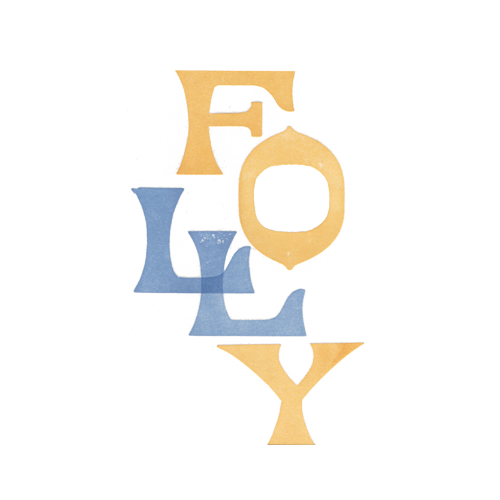William Wentworth, 2nd Earl of Strafford (1722-1791) had his principal seat at Wentworth Castle near Barnsley in Yorkshire, and Boughton in Northamptonshire was where he broke the journey to the social and political hub of London. Both estates were embellished with temples, sham churches and castles, obelisks and archways, including this castellated curiosity at Boughton.

Few records survive to document the early years of the arch. The earliest surviving estate map of 1794 does not show the part of the estate where the Spectacle stands, and 18th century visitors describe the ‘pretty Woods and Improvements’ and the number of ‘Temples & Alcoves’ on the estate, but frustratingly without ever being specific.
The Spectacle was probably built in the 1760s or early 1770s when Strafford was adding ornaments to the park. It was extant by 1775 when Rev. Dr. Lucas (c.1748-1812) mentioned it in his poem ‘Boughton Green’, composed in that year. Robert Lucas was born in Northamptonshire, and studied at Cambridge before holding ecclesiastical posts in Northamptonshire from 1772-1787: his poem describes some of the buildings Strafford had added to the Boughton landscape by that date:
‘Twas he stripp’d off the rustic role of chance,
And cloth’d it new, in taste and elegance;
Bade here and there the various object rise,
T’arrest with gentle force, the wandering eyes:
Here, the triumphal arch he turns; and, there,
The many-column’d temple bids appear;
On every slope erects the piny grove,
Whose soft retreat invites the conscious dove;
Or lifts the mimic castle from the dale,
Or spreads the watr’y sheet along the vale;
While o’er the rest, and greedy of the eye,
The daring obelisk attempts the sky:
The obelisk (1764) can still be seen, now tucked into a modern housing estate, as can the ‘mimic castle’ – which probably refers to the castellated eye-catcher farmhouse called Bunkers Hill (dated 1776 so almost complete when Lucas was composing his poem), although New Park Barn (1770) is also battlemented. Both are now a private homes. Sadly the intriguing ‘many-column’d’ temple is long gone.
Originally referred to simply as the ‘arch’, at date unknown the structure became known as ‘the Spectacle’, presumably because of its impact in the landscape: ‘spectacle’ being used in the sense of something visually striking. The arch gave its name to Spectacle Lane on which it stands, and the early 20th century Spectacle Lodge, built on land behind it.

By 1885 it had doubled into ‘the Spectacles’, and this plural form was used on picture postcards in the 1900s. This may just have been a misnaming which was perpetuated, or as Barbara Jones suggested the name may have arisen because the two towers resemble a pair of binoculars. Oddly, it is only named on the 1837 1st series Ordnance Survey map and then disappears from future editions.

In the 1950s follies were distinctly déclassé and the eye-catcher arch was described as a ‘bogus gateway’, and dismissed as ‘just ornamental’ (although after the war and a long period of austerity it is understandable that such luxuries were considered decadent). Reports from that decade also suggest that it was beginning to decay, having already lost its uppermost crenellations sometime in the early 20th century. Its saviour was Les Scott (1914-1999) who bought Spectacle Lodge in 1954. In 1992 Scott rebuilt the central arch, securing the future of the eye-catcher.
For over 50 year Les’s son Simon woke every morning to a view of the Grade II listed folly, and he has retained a passion for it and the other follies within Boughton Park. This culminated in a book on the subject first published in 1995 and revised in 2011. Simon Scott’s Follies of Boughton Park Revisited has been reprinted as a Limited Edition to coincide with the 300th anniversary of the birth of William Wentworth, Earl of Strafford. Only available direct from the author at £15 including UK postage. For more details see www.simonscott.org.uk/boughtonpark
N.B. rather confusingly Northamptonshire has two Boughtons. Strafford’s seat, discussed here, is Boughton Park. The house he knew (which was never admired) was demolished and a new mansion built in the middle of the 19th century . Not far away is Boughton House, the seat of the Duke of Buccleuch and Queensberry.

Thank you for reading. As ever, any further information or general comment is very welcome. There’s a comments box at the foot of the page where you can get in touch.






Simon Scott says:
Many thanks for publishing this. Great to see a couple of images that didn’t make it into my book finally seeing the light of day. And impressed you found the Robert Lucas poem – even I wasn’t aware of that! Hopefully the raised awareness of Boughton Park will mean it is not ignored when big decisions are made by West Northants Council regarding roads and housing. And, if anyone does want a copy of my Boughton Park book, there are only a couple of dozen left now. You have been warned!
Editor says:
Hello Simon. I am always happy to raise awareness of landscapes that have been, or may be, under threat – especially if full of such treasures as The Spectacle. You have done so much to raise the profile of the park and I am happy to have contributed a little extra information.